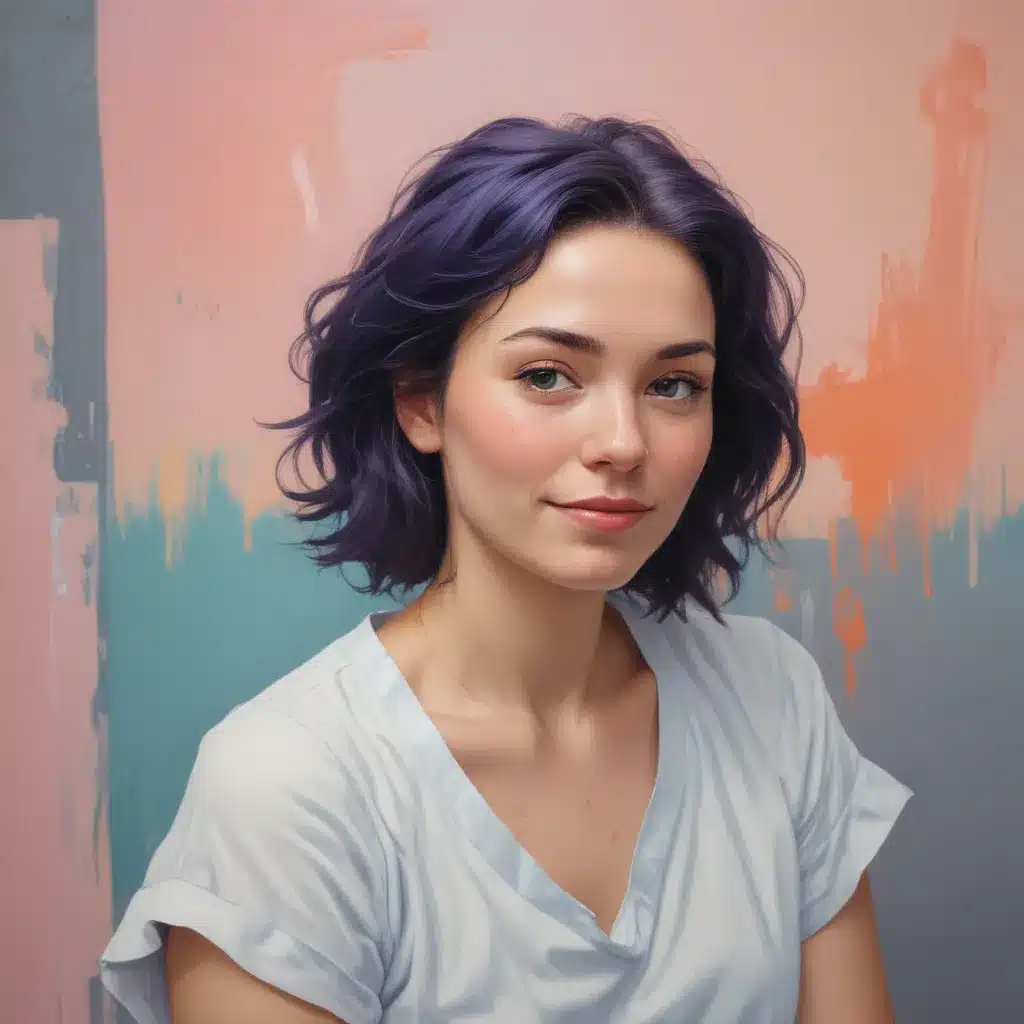
In the captivating realm of abstract art, the role of randomness has long been a subject of intense debate. For many, the raw, unpredictable quality of abstract compositions can appear as nothing more than a fortunate accident – the serendipitous result of paint haphazardly colliding on the canvas. Yet, as experienced abstract painters know, this perceived randomness is often the product of a highly intentional creative vision, one that embraces the element of chance as a powerful tool for self-expression.
Now, this might seem counterintuitive…
Modern Painting Techniques
The rise of Abstract Expressionism in the mid-20th century is a prime example of how artists consciously leveraged chance and spontaneity in their art. Pioneers like Jackson Pollock and Lee Krasner revolutionized painting by abandoning traditional brushwork in favor of dynamic, gestural techniques. Pollock’s iconic “action paintings” were created by dripping, pouring, and flinging paint directly onto the canvas, allowing the medium to dictate the final composition. Similarly, Krasner embraced the element of chance by splashing, splattering, and scraping paint onto the surface, resulting in a captivating interplay of controlled and uncontrolled elements.
These impasto and palette knife approaches to painting further blurred the line between intentionality and serendipity. By applying thick, sculptural layers of paint and manipulating the medium with unconventional tools, artists were able to introduce a sense of unpredictability and vitality into their work. The resulting surfaces became rich with texture, depth, and a raw, expressive quality that transcended the traditional boundaries of the medium.
Embracing Randomness and Spontaneity
For many abstract painters, the embrace of randomness and spontaneity is not merely a technique, but a fundamental aspect of their creative process. Chance and happenstance are seen as vital sources of inspiration, allowing the artist to tap into the subconscious and uncover unexpected avenues of expression.
The intuitive painting process, championed by artists like Joan Miró and the Surrealists, involves a surrender to the unconscious, allowing the hand to move freely across the canvas without the constraints of premeditation. This approach invites chance to play a significant role, as the artist relinquishes control and allows the medium to guide the composition.
By embracing the unexpected, abstract painters open themselves up to the transformative power of spontaneity. Drips, splatters, and accidental marks become starting points for further exploration, their unpredictable nature sparking new creative directions. This willingness to let go of control and embrace the unknown is a hallmark of the abstract painting experience, challenging the artist to navigate the delicate balance between intention and happenstance.
The Role of Materiality
The exploration of materiality is another crucial aspect of abstract painting that invites the influence of randomness and spontaneity. By experimenting with unconventional painting supports, mixed media, and a wide range of materials, artists unlock new possibilities for chance-based techniques.
The tactile, textural qualities of impasto and collage can introduce unpredictable elements, as the materials themselves dictate the final outcome. Integrating diverse media such as found objects, textiles, and unconventional mark-making tools can lead to serendipitous discoveries, blurring the boundaries between planned and unplanned outcomes.
Exploiting materiality in this way allows abstract painters to harness the inherent properties of their materials, letting the medium itself become an active participant in the creative process. The interplay between the artist’s vision and the medium’s unique characteristics becomes a dance of intention and chance, resulting in works that are both visually captivating and conceptually rich.
Cultivating a Creative Mindset
Embracing randomness and spontaneity in painting requires a particular mindset – one that celebrates uncertainty, champions experimentation, and remains open to the unexpected. For aspiring abstract artists, overcoming creative blocks and developing this mindset can be a transformative journey.
Embracing uncertainty is a crucial first step, as it allows the artist to let go of the need for control and embrace the generative potential of the unknown. Practicing mindfulness can help cultivate this state of openness, encouraging the artist to be fully present and responsive to the unfolding creative process.
Developing creative habits that nurture spontaneity and adaptability is also essential. Iterative exploration, for example, involves a cyclical process of making, reflecting, and making again, allowing the artist to build upon chance occurrences and unexpected discoveries. Reflective practice and maintaining a beginner’s mind further support this flexible, experimental approach to painting.
By fostering a creative mindset that celebrates randomness and spontaneity, abstract artists unlock new avenues for self-expression and artistic growth. The journey becomes as much a personal transformation as it is a technical one, as the artist learns to trust their intuition, embrace uncertainty, and harness the power of the unexpected.
Conclusion
In the ever-evolving world of abstract painting, the role of randomness and spontaneity remains a complex and captivating topic. While some artists have embraced these elements as a central part of their creative process, others have maintained a more intentional, structured approach. Ultimately, the answer to the question “Is abstract art random?” lies not in a simple yes or no, but in the rich diversity of artistic visions and the interplay between chance and control.
As you continue your journey as an aspiring painter, I encourage you to explore the potential of randomness and spontaneity in your own practice. Experiment with impasto techniques, mixed media experimentation, and intuitive painting processes. Embrace the unexpected, and trust in the transformative power of chance. By doing so, you may just uncover new and exciting dimensions to your artistic expression, blurring the line between the planned and the serendipitous.
Tip: Practice daily sketching to continually refine your technique